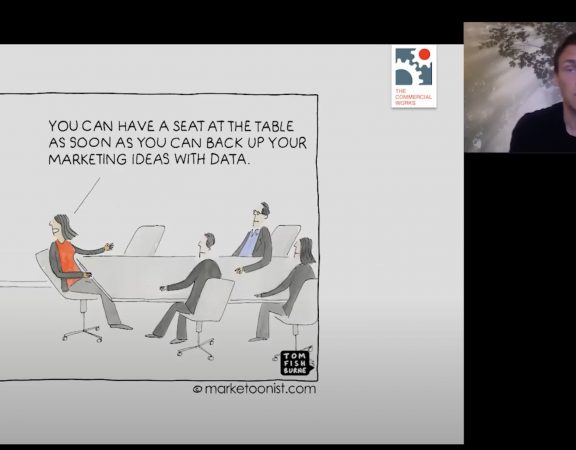Segmentation is one of those self-evident marketing instruments: just about any brand has it in its toolbox. Last year, segmenting (and consequently, narrow targeting) was suddenly not so obvious anymore as P&G turned their back on targeted Facebook ads. It created quite a fundamental discussion in the industry, with lots of remarks that tended to polarize proponents and opponents very much resembling an American election campaign.
As with any marketing subject, many people have many opinions about segmentation. To separate the wheat from the chaff, there’s only one thing to do: look at the data. When we do, consistently and thoroughly, we learn a thing or two about daily commercial life.
So here a couple of lessons I learned about segmentation mainly by looking at data.
1. Understanding customers has usually little to do with finding them
What consumers want and buy is quite different from who they are. To answer the question what you need to offer you must understand what consumers find attractive. When you know this, the next step is to find out who to reach in your attempts to seduce the consumer. For the understanding bit, often soft characteristics like needs, values or lifestyle is used. To reach or find consumers usually we are looking for hard characteristics like gender, age, spend or contract duration.
Usually the correlation between both types of characteristics is thin. In other words, understanding consumers says little about who reach. This means it is likely that you find yourself in one of two situations:
a. You understand what you will offer and why, but you don’t know how to reach (potential) buyers
b. You can find all sorts of ‘hard’ segments in your database or media consumption profiles, but you have no idea with what kind of propositions you can seduce them with
The implications is that if you build your segmentation on soft features you don’t get a sharp profile on hard features and vice versa. This doesn’t mean your segmentation is bad, it’s just an unpleasant fact you have to deal with.
2. Any segmentation guides specific goals
The above is important, as it sets limitations on what a segmentation can do for you. Like any other model, clustering your customers into segments is a simplified version of real life. If you model 5 million customers into 5 segments you should realize you have drawn an extremely simplified picture of your customers. If those 5 segments do indeed vary substantially on several essential attributes, your model might work for any activity that has a relationship to those attributes.
For example, if you have built a segmentation on consumer needs, the differences between segments on consumer needs will be large. The differences in socio-demographical characteristics will be modest at best, and absent at worst. The same goes for media consumption and any other set of attributes. So, your segmentation might be valuable for NPD, but worthless for media strategy.
3. Behaviour should always be leading
The thin relationship between different sets of attributes is something you should realize if you want to build a segmentation on fuzzy attributes like needs, values, or lifestyle. They usually result in intuitively attractive segments that confront you with the broad range of consumers you are selling to and the fact that not all consumers are like yourself. To be fair, this could already be quite valuable.
The fundamental idea behind segmentation, however, is that a differentiated approach will get you more customers who they stay longer, buy more, for more money or something else that will raise the value to the company. Very nice that different segments have different ideas and feelings, but at the end of the day what consumers do is the only thing moving the needle on your P&L.
4. We tend to forget about similarities
Segmentation is about finding differences. And because the amount of differentiation is usually lower than expected (and sometimes not even in the direction we expected), we need lots of effort to make sense of what we see. In that process, we often tend to turn a blind eye for something very prominent: similarities.
There are always lots of attributes on which your segments are more similar than they are different. These are important, as they tell you where differentiating your marketing activities is a waste of time and money.
5. There are no ‘hard’ criteria
Figure 1 shows how the raw data usually looks. Figure 2 shows how segmentations are usually presented. These pictures tell us that the translation from individual consumers to segments is not self-evident, to say the least.
There are many segmentation tools and algorithms available to get from figure 1 to 2 (and obviously, a bit of imagination…). One is not necessarily better than the other, they are just different. One approach might lead to better statistical differentiation, while the other approach might lead to a more intuitive understanding of what we know about the consumer. One approach might give us more ideas for targeting, while another approach might make it easier to measure differentiated response.
You should always use multiple criteria to evaluate your final segmentation model. Some of these will be of a quantitative nature (e.g. level of differentiation), while others are of a more qualitative nature (e.g. business logic, applicability). Long story short: as there are no hard criteria for the best solution, you should feel free to experiment. There’s no ‘true’ segmentation hidden in your data that’s just waiting to get revealed by some magic formula.
First time right
A segmentation that ‘works’ is one that has, at the bare minimum, (1) commitment from your future users and (2) measurable results. Both are, surprisingly, not self-evident. You could have created a logical and applicable segmentation model, but if you haven’t involved your stakeholders don’t expect them to be enthusiastic about your model. Likewise, if you can’t demonstrate that your segments behave differently, commitment will go down the drain fast. Or at least, it should. You could start again of course, but your stakeholders are likely to be weary or suspicious if you try to sell your improved model.
So, it is crucial to do it right the first time. Which means you must manage expectations. This starts by making explicit what segmentation can do for your company and what it cannot do. Something we usually want to sweep under the rug. But in this case, a little nuance will benefit your credibility. And likely, at the end of the day, your P&L.





